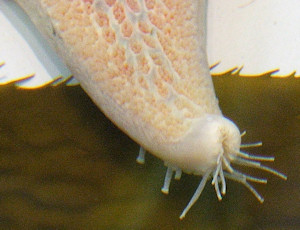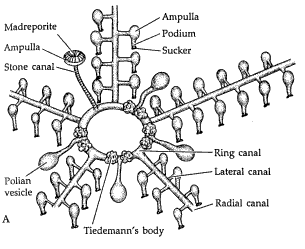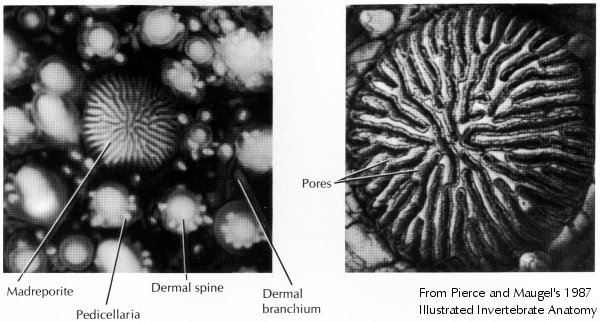The underside of the starfish is covered with hundreds of tube feet, which it uses for walking around, for attaching tightly to rocks, and for holding on to prey. To move, each tube foot swings like a leg, lifting up and swinging forward, then planting itself on the ground and pushing back. At the tip of each tube foot (in most species) is a suction cup. These aren't used when walking on level ground, but can be used when walking up sheer surfaces.
With so many little legs, starfish can reach enormous speeds — I've clocked Asterias vulgaris going over 30 centimeters per minute! (That's 60 feet per hour.) And some species, like the inestimable sunflower star Pycnopodia helianthoides, go even faster (Pycnopodia gets up to four times as fast as Asterias).





